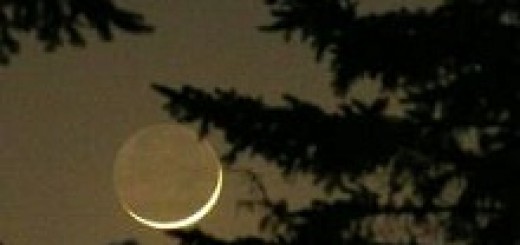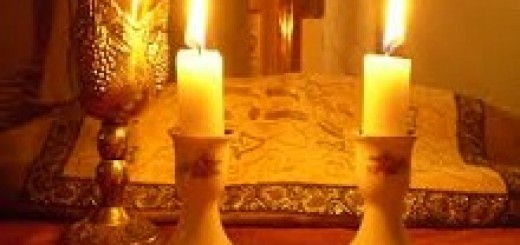By Rabbi David Sterne
Our Torah portion this week is Ki Tavo – “When you will enter the land of Israel…” The parsha is full of new commandments for the Jews to accept upon their entry into the land of Israel. The story of the entrance is rather dramatic, and has to be pieced together from both the written Torah and the oral. From the written Torah (in the book of Joshua), it seems that the Jews entered Israel from Jericho, which is near the Dead Sea. However, from the oral Torah (tractate Sota), it seems that the Jews entered a good deal further north, opposite the Biblical city of Shechem (now called Nablus by some). In any case, our sixteenth century sage, R’ Nosson Nata Shapira, places emphasis on the entry near Shechem, and finds some interesting Kaballistic underpinnings to the story…
To begin with, it seems that a lot of “stones” were set up in various places as the Jews entered Israel. The spiritual meaning of these physical stones will become clarified, but it seems that there is a difference of opinion between the Jerusalem Talmud, which claims that the stones were set up in four different locations, and our Babylonian Talmud which says they were set up in three places. R’ Shapira places more emphasis on the second opinion, that of our Babylonian Talmud and he tells us that the three different places where stones were set up were in Jordan, in Gilgal, and on Mt. Eival (adjacent to Shechem). In each place, twelve stones were set up, and R’ Shapira initially questions, why in three locations? Upon their entry, Joshua (in Joshua 4:6-7) said, “As to your children who will ask tomorrow, ‘for what are these stones,’ you may answer them that the Jews passed through the Jordan on dry land.” Therefore, it should have been sufficient to set up only one group of stones, at Gilgal, immediately after crossing the Jordan. Why were they set up in three places?
Rabbi Shapira’s answer is fascinating; he suggests that with the three different locations, God wished to inform the world of the three worlds – bria, yetzira and asiya – and of their connection with the Jewish entry into Israel. Just as our forefather, Yaakov saw three different worlds as he left Israel, so the Jews were shown three worlds as they entered. When Yaakov dreamt of the ladder in Genesis, the Torah tells us that the ladder was “placed on the land” – this is the lowest physical world of asiyah. Its head “reached into the heavens” – this is the spiritual world of constellations and orbits, or yetzira. And, “there were angels ascending and descending” – this refers to the world of bria. The same three worlds are hinted to at the very beginning of Genesis – “In the beginning Elokim created…” – this is the world of angels (which are sometimes called “Elokim“), or bria. The verse continues, “…the heavens…” referring to the world of constellations, or yetzira, followed by “…and the earth,” referring to the lowest world, the physical world of asiya. Each of the three is subdivided into twelve, as we see once more in the episode with Yaakov – he placed twelve stones around his head as he went to sleep, but in the morning when he arose, the twelve became one stone upon which he poured oil to “anoint and sanctify” it. At that moment, he proclaimed, “And this (zeh, gematria 12) is none other than the gate to heaven.” (Those who claim that there were three stones are also correct, because they signify the three different worlds, as above).
Now, R’ Shapira goes into the details of the three sets of stones upon entering Israel. The first set of twelve stones were set up in the Jordan River, where the Cohanim, or priests stood. They correspond to the world of angels, and there are twelve such stones, just as the waters of the Reed Sea parted in twelve paths to allow the twelve tribes to pass through. And, in Yaakov’s dream, God’s essential name Havaya was established “over” the ladder, and this name has twelve variations, or permutations of the letters.
The second set of stones was established in Gilgal, not far from the Jordan River on the way to Alon Moreh (Shechem), and it corresponded to the world of constellations and orbits, or yetzirah. Joshua says that the Jews crossed “on dry land through the Jordan” to indicate that the stones were taken from the Jordan River (and nowhere else), but the stones themselves allude to the “middle world” of yetzira. The third set of stones that were set up on Mt. Eival symbolize our lowest world, the physical world of asiyah. Our world, says R’ Shapira is “digital” – it is either “blessed” (as in the blessings uttered by the tribes on Mt. Grizim) or “cursed” (as in the blessings uttered by the tribes on Mt. Eival). R’ Shapira explains that this duality reflects the harsh reality that our world both “exists” and “wastes away.” Although each species or category of creation persists and remains, individual members of each category may be lost. This is the meaning of the two mountains, Mt. Grizim and Mt Eival, and they also represent “form” and substance.” Substance always persists, but the form that it takes on may change from time to time.
According to Kaballah, says R’ Shapira, the three sets of stones are associated with three soul levels. The stones within the Jordan river were associated with the soul level of nefesh, coming from the world of asiya. The Jordan is yored din, alluding to the place where din, or judgment descends (yored) to the world, since the evil of this world is greater than the good. From there, the Jews proceeded to Gilgal, corresponding to the world of yetzira (presumably ruach within the person) and finally Mt. Eival corresponded to all three worlds and to the soul level of neshama within man.
R’ Shapira further elaborates, telling us that each of the three worlds is associated with twelve as well. In the world of asiya are twelve techumin, or “boundaries” (of the twelve tribes?). Yaakov alludes to them with his statement, “This (zeh) is none other than the house of God,” where in the word “house” (bayit) is an acrostic for yud-beit tehumin (12 boundaries). In the world of yetzira, there are twelve borders (g’vulin), and in bria there are twelve tribes. In Atzilut there are twelve combinations of the letters of God’s holy name Havaya.
Rabbi David Sterne is a prolific author on chassidic thought and has translated many of its seminal works. He resides in Israel and is the director of Jerusalem Connection. To read more of his work and to purchase his books visit http://www.jewishspiritualbook






















